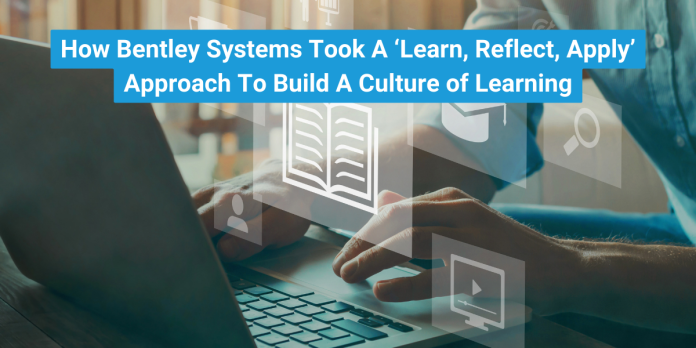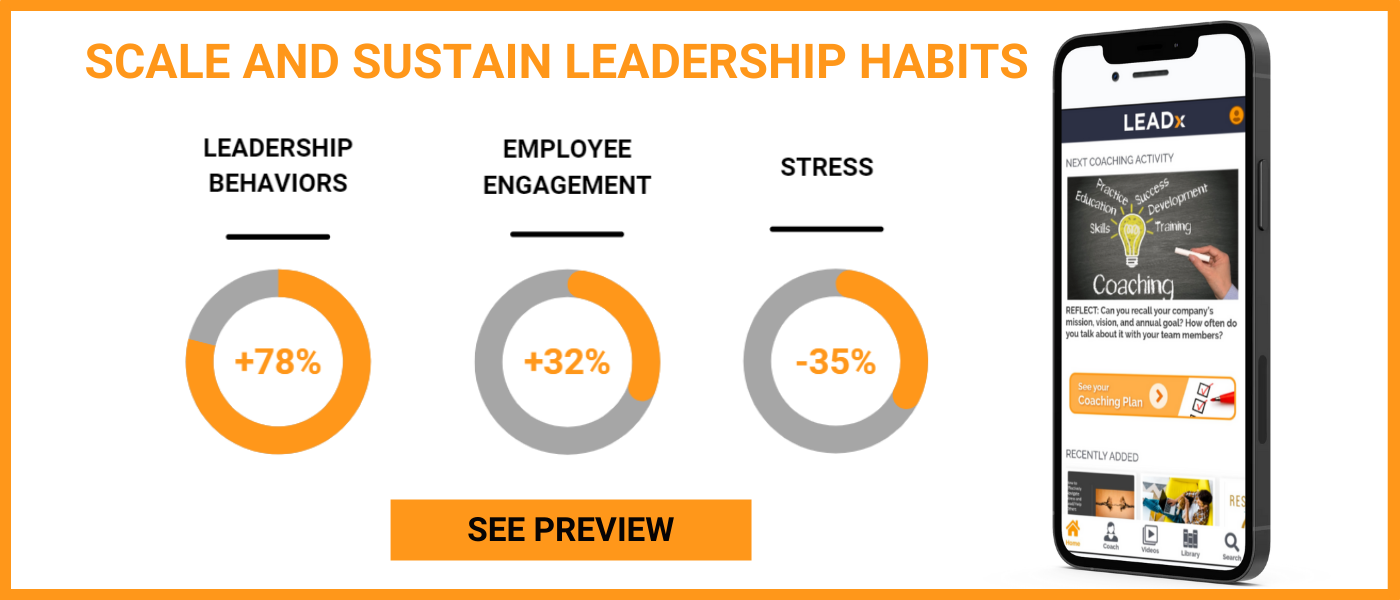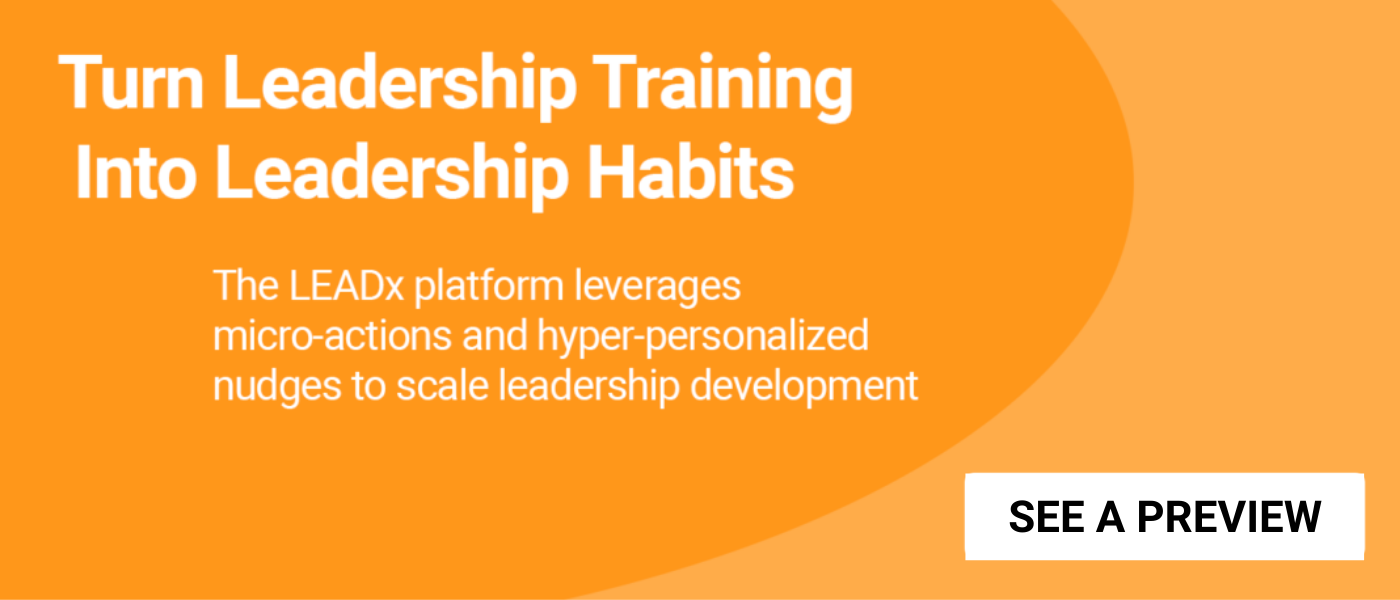
98.5% of our population has completed at least one training in the past year. That really speaks to our culture. Our colleagues are passionate about learning and continuous growth, and they want more. —Suzanne Little, Chief Colleague Success Officer at Bentley Systems
Bentley Systems was launched in 1984, and in 1986 the founding brothers developed MicroStation, the company’s flagship CAD software. Since then, the venture has grown into the leading infrastructure engineering software company. They provide innovative solutions to advance the world’s infrastructure, sustaining both the global economy and the environment. Bentley’s 5,000 colleagues generate annual revenues of more than $1 billion in 194 countries.
 When it comes to scaling learning and development to colleagues around the world, Bentley has one of the best statistics I’ve ever heard. In 2022 Bentley achieved a 98.5% learning program completion rate by its colleagues. Many of the elite companies I interview (companies with massive leadership development budgets) flounder to get participation up over 30%.
When it comes to scaling learning and development to colleagues around the world, Bentley has one of the best statistics I’ve ever heard. In 2022 Bentley achieved a 98.5% learning program completion rate by its colleagues. Many of the elite companies I interview (companies with massive leadership development budgets) flounder to get participation up over 30%.
To explain how they got there, Bentley’s Elyse Rubin, Senior Talent Development and Learning Program Manager, and Suzanne Little, Chief Colleague Success Officer, agreed to meet with me for an interview.

The Philosophy that Drives Bentley’s Approach: Five Steps to Intentional Change
Rubin’s core leadership development philosophy comes from Daniel Goleman’s book Primal Leadership. She said, “The part of that book that really stuck out to me was Richard Boyatzis’ Five Steps for Intentional Change, which highlighted how to initiate meaningful change.”
Those five steps are:
- Ideal self: Where do I want to go? What do I want to be known for as a leader? What is my Mount Everest?
- Real self: Where am I actually at today? For example, Little and Rubin leverage StrengthsFinder 2.0, 16 Personalities, and 360 feedback to help leaders get a sense of their “real self.”
- Learning agenda: This is the formal learning piece (i.e., the workshop or live session, OnDemand learning pathways).
- Experimentation: Participants need to learn new behaviors, practice tasks, and try new things.
- Developing Support & Relationships: Interaction and social support are powerful ways to help learners change their behavior. For example, Little and Rubin use cohort-based learning and have colleagues interact with each other and with their managers.
To drive behavior change in their training programs, Rubin and Little sought to hit on each of those five components.
Bringing the Five Steps to Life: ‘Learn, Reflect, Apply’
Equipped with a process for intentional change, Rubin and Little then had to find a practical way to bring it to life in their programs.
Their solution was to distill those five steps down into three highly practical steps. Rubin said, “These five steps from Primal Leadership became the impetus for our practical approach to leadership development: Learn, Reflect, and Apply. These three words encompassed the five steps of intentional change.”
‘Learn, Reflect, Apply’ in Action in the Leadership Excellence and Development (LEAD) Program
We redesigned our LEAD program this year to be heavy on experiential learning. Our focus is on equipping our leaders at Bentley with the foundational behaviors that we see as required. That means establishing a common language and giving them the toolkit they need to grow. —Suzanne Little, Chief Colleague Success Officer at Bentley Systems
The LEAD program is a nine-month program that covers five key pathways to develop managers of managers (directors and senior directors). The pathways are:
- Defining Leadership
- Building Trust
- Creating Vision and Strategy
- Execution
- Coaching Potential
To move these leaders through the LEAD pathways in a way that fosters learning, reflection, and application, Little and Rubin employ three key strategies:
Strategy #1: A Custom Curated Learning Path Keeps Learning Engaging, Relevant, and Applicable
We believe that leadership is a science as well as an art. So, we bring in custom models and tools to help leaders build their toolkits. —Suzanne Little, Chief Colleague Success Officer at Bentley Systems
Little and Rubin curate content with “Learn, Reflect, and Apply” top of mind.
Little said, “We’ve developed a custom-curated learning path. It leverages in-house, custom-created content as well as external subject matter experts. It also leverages content created by experienced executives and peers at Bentley.”
The curated content helps drive interest in the “learning” component. And the content produced in-house by executives helps participants “reflect and apply” by bringing in real examples from the business.
Strategy #2: Deep Involvement and Interaction with Managers and Peers Helps Drive Reflection and Application
Little and Rubin drew on the fifth step of Intentional Change (Relationships and Support) to help participants reflect on their learning and apply it on the job.
Little said, “We did a lot of research as we revamped our LEAD program, and one of the most common reasons that leadership development programs fail is not tying it back to the business context and priorities. So, we decided that the managers would interact with participants deeply and consistently to help formulate our training in the overall Bentley structure and priorities. And the participants’ managers would be key to ensuring that our learners continue on their development journey far beyond the program.”
Little broke down seven ways that Bentley Systems involves manager and peer support:
- Ensure manager buy-in before the program kicks off. Before the program begins, Little and Rubin check to make sure that the manager is supportive of their colleague’s participation. They also check to make sure the program is at the right time in terms of that colleague’s workload.
- Have a manager call to kick off the program. This is an easy way to signal the program’s importance and value.
- Manager check-in points. Throughout the program, Bentley has key check-in points baked into the agenda. Managers also have access to their learners’ materials.
- Paired conversations about applications and reflections. They even pair up colleagues in proximity so they can meet in person. “It’s a global program,” Rubin said, “so we map out where people in the cohort are co-located so they can meet in person.”
- Apply action back to their team and reflect. They also have exercises where leaders apply what they learned with their team and reflect on how it went.
- They host live wrap-up calls after each session. This gives peers time to share feedback, experiences, and examples.
- They host a peer learning network on Microsoft Teams. Rubin said, “We do encourage learning in the flow of the work. So we have a Microsoft Teams channel specifically for each cohort. They can chat in real time, and if they have questions, they can share. We drive interaction on Teams by including custom content. For example, after we did the StrengthsFinder 2.0 assessment, I created a mapping for them to see what are the top strengths of the cohort. That created great dialogue.”
Strategy #3: Involve Senior Leadership to Connect Training to the Bottom Line and Win Buy-In
Two senior executives partner with Little, Rubin, and Program Manager Catherine Adam to help connect their training to the bottom line and demonstrate its value.
They do everything from influencing the content with real-world examples to attending key calls and creating homegrown content. Little said, “We have Brock Ballard, who’s our recently promoted chief revenue officer, and also Alan Kiraly, who’s our SVP of our industry solutions group. Both work with us to influence the content and ensure that it’s framed in the context of what our teams in the business are talking about. Brock and Alan bring their perspectives to ensure that our training makes sense and resonates.”
Bring an Application-Focused Approach to Your Organization
So many leadership development professionals look to completion rates and participation as indicators of success. And, ironically, those programs tend to have much lower completion rates and participation than Bentley Systems; which focuses its attention on something else entirely—behavior change.
It’s through Little and Rubin’s intense focus on their end goal, behavior change, that everything else then falls into place (i.e., completion rates and participation).






